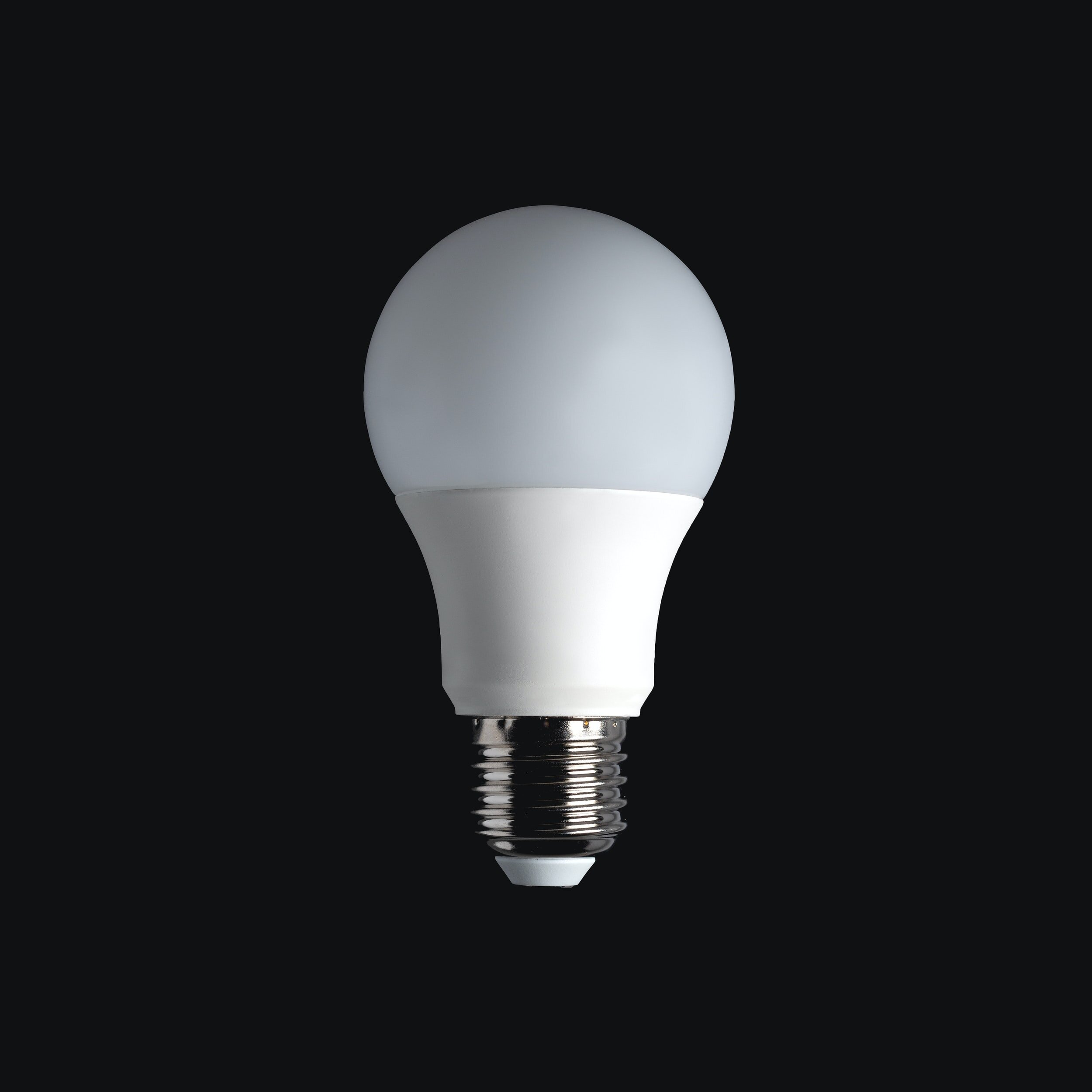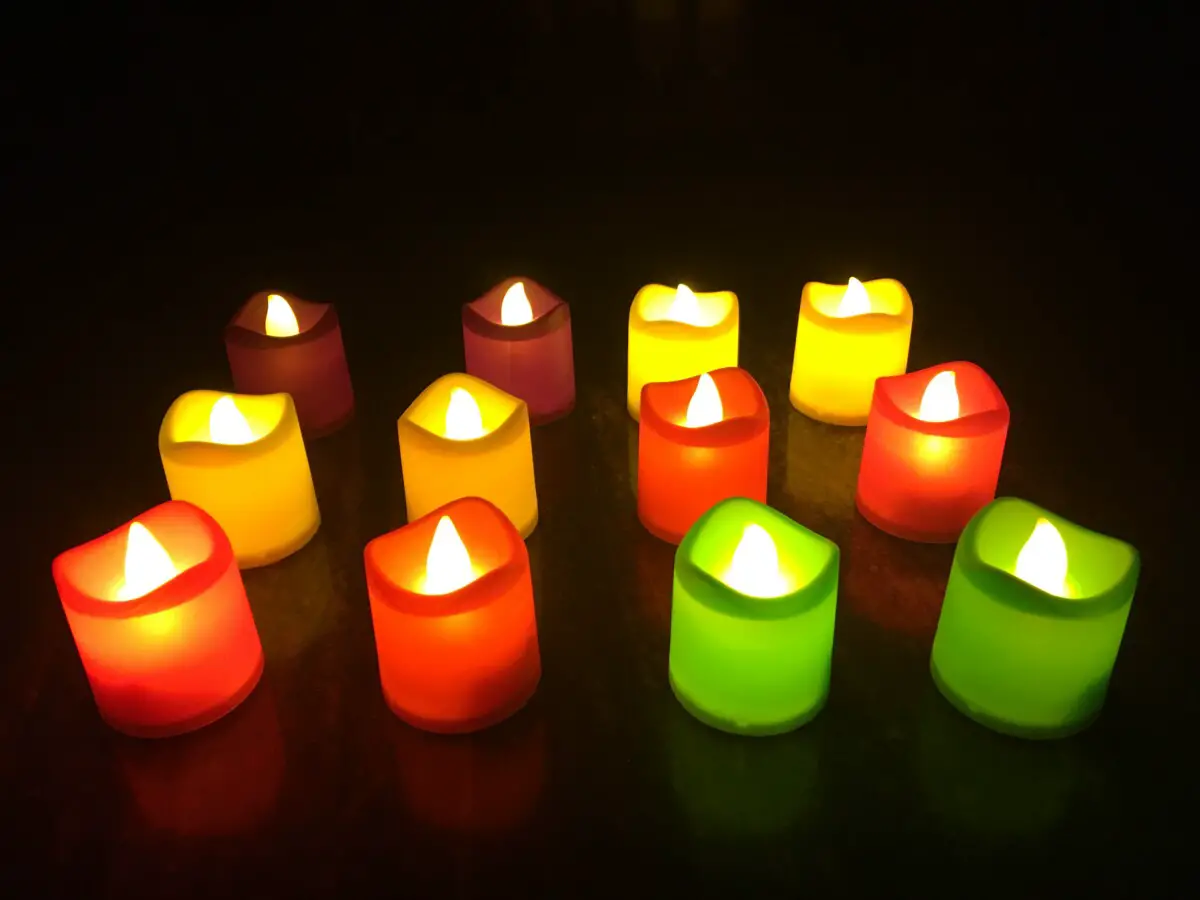How Tunable White LEDs Work
Tunable white is a new unique function added to new LED fixtures which allows them to change the Kelvin temperature of the light it outputs. This means that you can get several different light outputs by installing just one fixture.
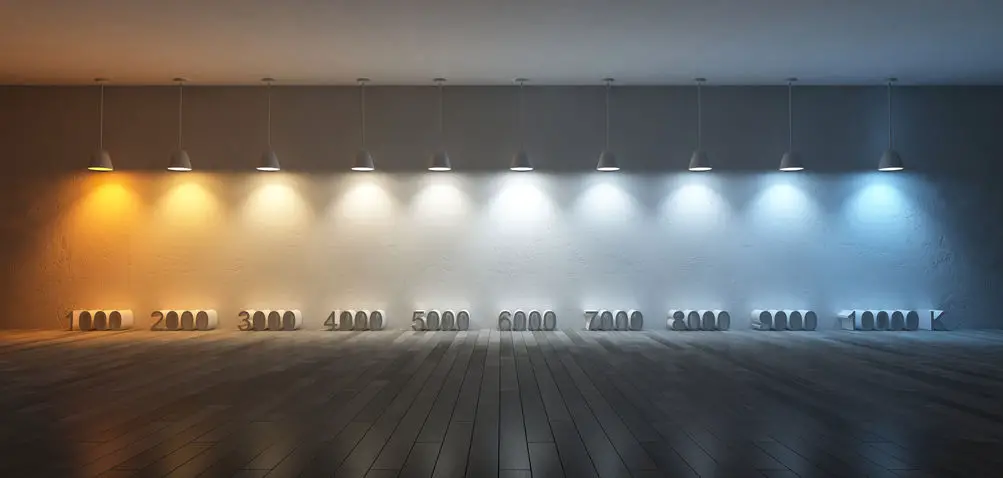
Contents
How Does Tunable White LED Lighting Work?
The way a tunable white LED works is by using warm LEDs and cool LEDs in the same fixture. This allows you to switch between and mix the LEDs of different colour temperatures until you have the desired colour temperature output.
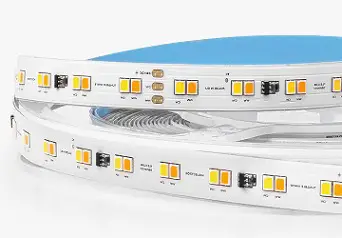
The colour temperature of the light these two different LED chips produce is in most cases 2700K (warm) and 6500K (cool).
Click here for an article better explaining Kelvin in lighting.
This principle can be seen visually by simply looking at the LED chips. In a tunable white fixture, you will see several chips of two different colours. One will be yellow (cool) and the other one will be in a more orange shade (warm).
The reason why they are different colours has to do with the way they are constructed. An unaltered LED will have a colour temperature of around 4000K normally, meaning that extra modifications need to be done to these chips in order to make them produce the desired light.
The warmer LED is more orange because of an added layer of a phosphor compound. When the phosphor is applied on top of the LED the light has to travel through it. This will alter the light’s temperature and make it warmer and it will eventually reach 2700K.
The cooler LED is made by changing the mixture of RGB diodes inside of the chip and adding more blue diodes to the mix. This will cause the LED chip as a whole to give off a cooler light.
When these two different LEDs are used together it is possible to regulate the colour temperature of the fixture. This is done by a process of altering the light output of the different types of LEDs until the desired colour temperature has been achieved.
For example, we might wish for a colour temperature of 3000K. In this scenario, the fixture would light up the 2700K LEDs all the way and only turn on the 6500K until the combined light is 3000K.
Using this principle of controlling the light outputs of the different LEDs it is possible to reach the entire spectrum between 2700-6500K using only one singular fixture.
What Are Tunable White LEDs Used For?
Tunable white is a rather new technology that hasn’t yet found its way into a significant amount of fields yet. The most prominent usage of tunable white currently is within office spaces.

There are a few reasons as to why they are used within these spaces in particular. The main reason for this is that an office is a space where people spend a lot of time within a single day.
This is important because when humans spend a large amount of time indoors it is possible to “detach“ from our natural body clock. This “body clock“ is also known as the circadian rhythm and is regulated mostly by the light we receive from the sun.
The circadian rhythm controls a lot of our bodies such as concentration and hormone production, meaning that it is crucial for people to maintain a good balance with it.
This is why tunable white fixtures can become a natural choice to use in spaces where people spend a lot of their time because they allow us to artificially replicate the change in sunlight through the cycle of a day.

When the sun rises and sets it gives off a much warmer light in comparison to when it peaks in altitude. All of these positions of the sun give our body clock different signals.
The much cooler light gives us signals to perform and be concentrated whereas the much warmer light gives us a better mood and increased sleep hormone production.
This is the patterns we try to simulate using tunable white fixtures. They change their colour temperature throughout the day to match the colour temperature of the sunlight.
This concept is also known as HCL or also known as Human Centric Lighting. This is essentially the principle of recreating natural light in an indoor environment where it usually otherwise wouldn’t be possible.
The concept of HCL and tunable white is also starting to make a breakthrough in newer school buildings for the same reasons as above.
It simply improves one’s ability to perform while also making sure you feel as well as you possibly could.
The Usage Of Tunable White In Different Fixtures
Tunable white fixtures come in a lot of different shapes and forms. One of the most common forms of it is within downlights.
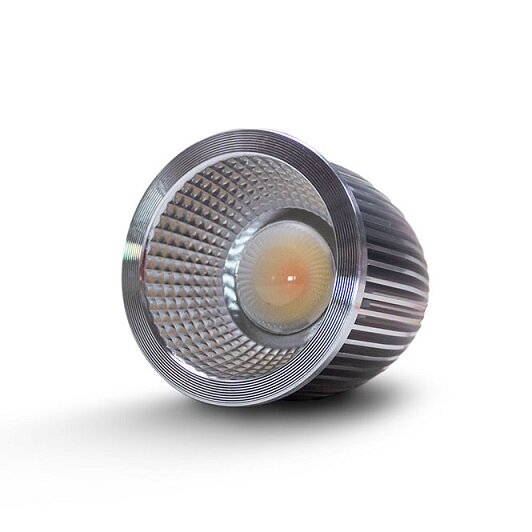
Downlights are rather versatile as they can be used in a lot of different environments, most notably within homes and offices.
They are also rather common as LED strips. This makes them incredibly easy to use for anyone who simply wants to play around with tunable white effects at home.
It is also common for tunable white fixtures to be pendant lights, most notably office pendant lights.
Since tunable white is used within offices it makes sense for them to come in the fixtures normally used in offices.
Pendant fixtures become very relevant in this case since most offices use them due to their ability to be controlled individually and are not forced into groups as other fixtures might be.
How Tunable White LEDs Are Controlled
Tunable white can be controlled in several different ways. The most common ways for tunable white fixtures to be controlled are:
Daylight sensors
Manual dimming
Wireless control
Daylight Sensor
Controlling tunable white using a daylight sensor makes sense from the perspective of HCL. It will read the colour temperature of the incoming light and match it with the fixtures inside.
This is the easiest option to create an environment of changing colour temperatures because it reads it directly off the incoming light.
You can also achieve this effect by using a timer with a preset of the sun’s cycle instead of reading it directly off of the suns rays.
Manual Dimming
Manual dimming can be achieved in a very similar fashion to how we dim regular fixtures. The construction and function for these however have to be altered in order to accommodate for this new feature.
While a regular dimmer dims the intensity of the light we now need a dimmer that can change the colour temperature as well as the intensity of the light.
Some of the newer and more current dimmer designs have a clever solution to fit both of these functions into one single dimmer.
What they have done is that they allow you to push the dimming wheel in. This allows you to turn the wheel in 2 different states: pushed-in and regular unpushed turning. Since there are 2 different states of turning, we can assign each state to the intensity and colour temperature parameters.
Wireless control
Wireless control for changing tunable white is one of the more modern and convenient ways to control it. This can work in a few different ways. The most common way this would work nowadays is to control it via an app.
This would allow you to set the exact colour temperature and light intensity you want with the slide of a finger. This can be very helpful in setting up a specific mood for the area or simply experimenting and finding what works best for you.
Summary
To summarize, tunable white is an extension of LED technology where cold and warm LEDs work together in the same fixture which allows it to shift colour temperature on demand.
This technology is mainly used in light spaces where human well-being is prioritized and the efficiency of the people in the space is important.

